Philips's Hue Light Bulb combines energy-efficiency, wide-spectrum LED lighting and remote control capabilities via iOS app into a neat little package, but is it worth the high price of entry?
The Philips Hue Wireless Light Bulb promises full control of its functions over Wi-Fi, including per-light brightness and color settings, remote operation and geofencing capabilities. In addition, Philips includes a powerful GUI-driven app to custom tune lighting in nearly any environment.
So far, the product has been popular with early adopters, but its high price tag has kept it out of reach for many would-be users. In this in-depth review, we discuss whether the color-changing Hue represents a real value on the dollar, or is merely an expensive one-trick pony.
Design
Hue bulbs are heavy. Carrying three separate LED modules rated at a combined 600 lumens, the base is mostly heat sink. At the bottom is an A19 socket, otherwise known as a regular light bulb socket, attached to an aluminum stem. Up top is a translucent glass dome, under which sits the three-LED array.
Each tuned LED has the ability to output different colors, which allows Hue to mix shades to more accurately reproduce what Philips claims is a full spectrum of light. In tandem with other bulbs, users can create an almost endless variety of color combinations.
When the bulbs have been operating for any amount of time they become hot to the touch. You can really feel the heat sink working as the upper glass portion remains moderately cool, a good thing for enclosed lamps or those with cloth shades. We wouldn't say Hue is hotter than a conventional incandescent, however. In fact, its metal construction affords a more efficient mode of heat transfer compared to an all-glass bulb.
Inside, Hue boasts a communications module for talking to the ZigBee LightLink wireless standard bridge, which comes with the Hue Starter Pack. This means the bridge and bulbs can be used in conjunction with other LightLink-compatible products, like remote switches, timers and other manufacturers' lights.
Philips estimates Hue will last 15,000 hours while drawing up to 8.5 watts at full blast. By contrast, an equivalent incandescent pulls 40 watts and is usually rated with a 1,000-hour lifespan, while compact fluorescents, or CFLs, are rated at 10,000 hours.
Philips produces its own LEDs and says the Hue bulb is rigorously tested to ensure low color deviation. The company ensures color consistency to be less than 5 SDCM, or standard deviations of color matching. SDCM is a photometric measurement that defines differences in color. In short, fluctuation in color over Hue's lifetime and between individual bulbs is very low, but may still perceptible to users with acute vision.
Setup
On the hardware side, setup consists of plugging the ZigBee bridge into a power outlet and wireless router, then screwing in the Hue bulbs. From there, almost everything else is done in-app.
Because the bulbs don't have a physical "on/off" switch, they are powered on by default. When first screwed in, the light is set to a warm tone that mimics light thrown by an incandescent bulb.
Once everything is set up and powered on, the app will direct you to press the sync button on the bridge. Once the bridge is discovered by the iOS device, any activated bulbs should automatically be located and identified in the app. Users can change the name of their lights at this time, or can do so at a later date via the settings menu. By default, the app designates the bulbs "Hue Lamp 1," "Hue Lamp 2," and so on.
The app also has a feature to add additional bulbs, with the bridge supporting up to 50 lamps for the well-heeled home automation fan.
We didn't encounter any hiccups with Hue's setup procedure, though we did experience the occasional bridge disconnection when first testing the product. Another issue would force us to rediscover the bridge and bulbs whenever the units were accidentally powered down or the ethernet cable was removed. The problem has since been solved, however, allowing hassle-free connectivity even after experiencing a cable or power outage.
In use
The possibilities with remote lighting are already exciting, but add in the option to change colors and Hue starts to look rather enticing. Covering the most important functions first, Hue is a capable everyday lighting system. To be clear, this is not only "mood lighting" or a decorative appliance, but is a viable light made to perform as would any conventional lamp.
In our main testing environment, also known as my home, we use CFL bulbs in all available sockets. For example, in the living room, we have 55W, 5000K full-spectrum CFLs putting out a considerable amount of light, so we are used to having a bright space.
With the starter kit, Philips provides three bulbs and one bridge, which is just about enough power to comfortably light a medium size room. We think the starter kit can handle anything from a small living area to a bedroom, but anything larger would require extra bulbs.
The app has a number of light presets, including shades of white from warm to extremely cool. Among the preset whites are temperatures designed to go with specific activities. Warmer shades include "Reading" and the almost-red "Relax," while cooler options are named "Concentration" and "Energize."
For our purposes, "Concentration" was used the most, though we did experiment with warmer shades and found their descriptions to be pretty accurate. As an example, "Relax" is actually a relaxing color we would use to wind down at the end of the day.
Philips is big on light research and how it translates to health and wellness. The company has brought a few light therapy product to market, and while Hue is not sold solely on that application alone, the lights do have baked-in features that are said to help modify moods.
Scenes and Light Recipes
If you're not keen on the white shades Philips provides, they can be changed in-app. In fact, Hue can reproduce so many shades of white that the color has its own palette to choose from, extending from an almost golden color to a harsh pale blue.
Since bulbs can be controlled separately, users can tune an environment to suit their tastes, then save the result as a custom setting, or what Philips calls "scenes" and "light recipes."
Aside from the white light presets, the app comes loaded with over ten Hue settings meant to recreate "scenes," like "Deep Sea," "Greece" and "Ski." Each scene comes with a picture and the app tries to match dominating colors to recreate the image on a bigger scale.
For example, in "Deep Sea," one bulb is set to blue, while the other two are positioned in the same spot on the red jellyfish. Users can also edit the scene by pressing the pencil icon next to the scene's brightness slider.
In editing mode, both a white shade palette and the selected image are shown. Users can change a bulb's color in real time by dragging an eyedropper icon over the photo until they land on a pleasing shade. Color changes are stepless, making transitions smooth and actually fun to play with.
The app also allows users to import pictures from the Photos app or the Hue online community. We tried recreating various scenes to mixed results. As can be expected, more dynamic and colorful photos play out better than drab snapshots. A good example is a beach scene with a bright blue sky, white sand and maybe some green trees.
Hue can reproduce primary colors effectively, but has a bit of trouble with secondary and tertiary shades. Color matching with pictures is quite good, however, especially when using a bright sunlit photo.
Remote control
One of Hue's main features is remotely controlling lamps. Users are actually forced to use the app as turning lights on and off with a switch will reset them to the default setup color.
Philips offers a number of control options besides the dedicated app. Most notable is a geofencing mode officially introduced in May that turns selected lights on or off when a paired iOS device enters or exits a predefined area, usually their home. When Hue first introduced the feature, it was nearly unusable. Geofences were unreliable and turning on the feature sucked our iPhone's battery dry by constantly updating location data.
An update to the app fixed the battery life issue and tweaked the mode to allow for more customization. The latest version lets users not only geofence, but activate time filters as well. Previously, when geofencing was turned on, lights would go on and off whenever we entered and exited our house, even in the daytime. With time filters, users can opt to turn lights on only after daylight hours.
Lamps can also be set to an alarm timer, which turns lights on or off at a predetermined time. The setting also allows for more granular control in choosing which days the alarm is active. Finally, a timer can be selected to cycle through scenes at given intervals.
Users are able to save geofencing, alarm and timer settings as scenes, up to a total of 90.
The Hue app also has hooks in If This Then That (IFTTT), which offers a few more remote control possibilities. We tried IFTTT's SMS service and created the recipe "If 'Send Text' Then 'Turn Off Hue.'" It worked so well we use it in conjunction with Siri to turn off house lights hands-free. IFTTT also has recipes to change Hue's color when a new picture is added to Photos, dim the lights and cycle through scenes, among others.
That's another great feature. With wireless data, we can control the lights at home, or at least the ones with Hue installed. Philips makes users sign into a special Web portal to take advantage of the away-from-home functionality, but signing up is worth it as the app is able to relay the current state of each Hue bulb and conduct other system management actions.
Putting the app-driven automation together during a recent trip, we used the alarm to turn the lights on and off at night at random times to fend off intruders, and would confirm that all lights were off the next day via the Hue Web portal.
The portal also serves as another place from which to control and monitor your Hue bulbs, making them accessible from any internet-connected device.
Our time with Hue was not all positive, however. We found that the app can only support one bridge and, therefore, one set of lights at a time, which is a problem for users who have a set of bulbs in the office and at home. According to Philips, there isn't much demand for multi-bridge support, so there are no plans to integrate the function anytime soon.
Confusingly, the company's website says that users with two or more starter kits can connect the bridges to their router and control each one with separate apps. As there is no way to easily duplicate apps in iOS, we can only assume the company is suggesting we use different devices for each bridge; hardly an optimal solution.
Conclusion
Hue may not be the light bulb reinvented, but the system is just as bright as standard incandescent and CFL models, more efficient than both and comes with built-in remote control and color changing capabilities.
When Hue first launched, the software was not developed to the point where it could take full advantage of the hardware. With the latest revision, Philips has shown great progress in not only implementing noteworthy new features like geofencing, but also extending support to third-party developers.
We think this last point is crucial to the success of Hue. By opening up the platform to outside parties, Philips is inviting unique ideas and input to their project. With a large, involved community, Hue's hardware can go further and mature at a much faster pace.
For those looking for a polished remote control light with great app support, tons of automated functions and the option to set "mood lighting," we can recommend Hue as the best product currently on the market. Others who want a simple setup, don't care about light recipes and don't need to remotely control or automate their system would be better suited with another product.
The Philips Hue Starter Kit sells for $200 on Amazon and comes with three bulbs plus wireless bridge. Individual bulbs can be purchased for $60.
Score: 4 out of 5
Pros:
- Efficient LED technology
- Color changing "scenes" and "light recipes" are actually useful
- Extensive remote control capabilities
Cons:
- Expensive if you're looking for a simple remote control light
- Washed-out tertiary colors
- Bridge compatibility issues
 Mikey Campbell
Mikey Campbell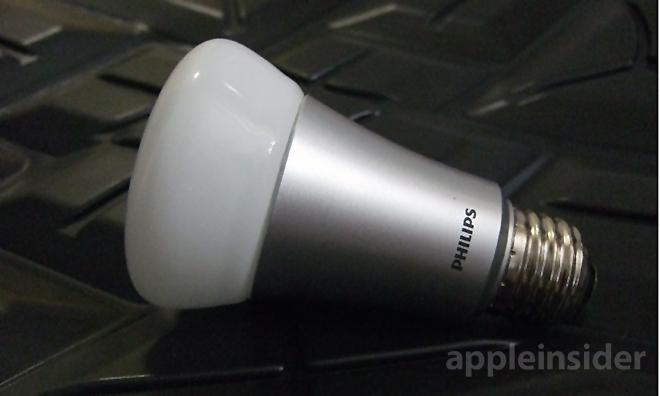
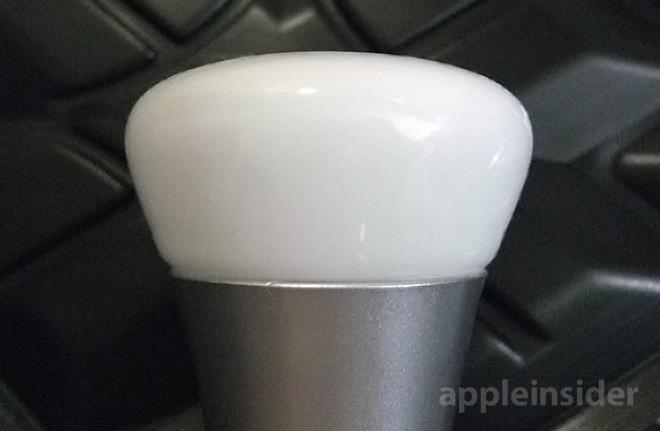
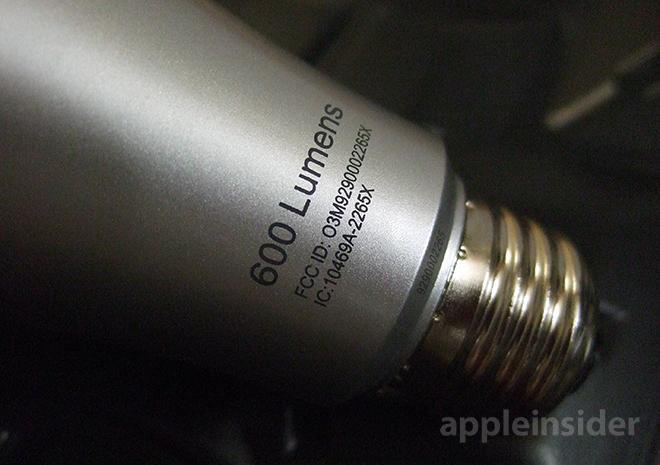

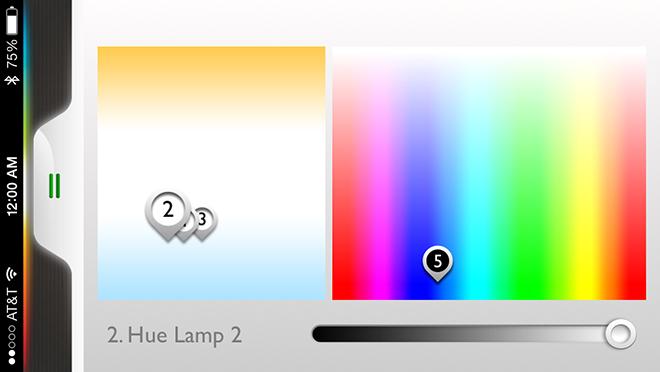

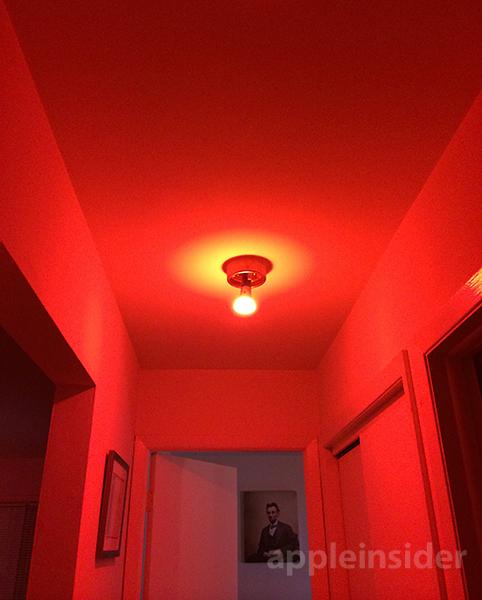
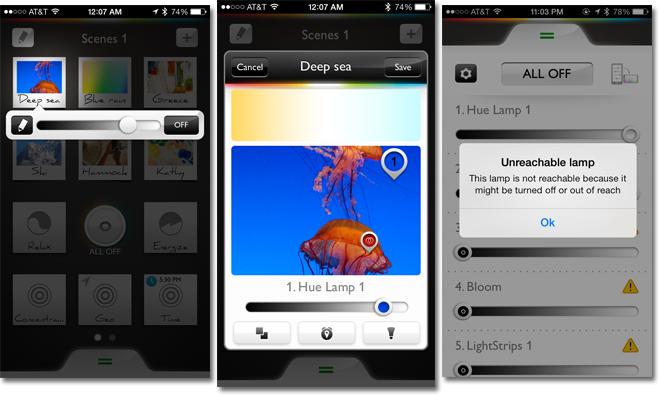
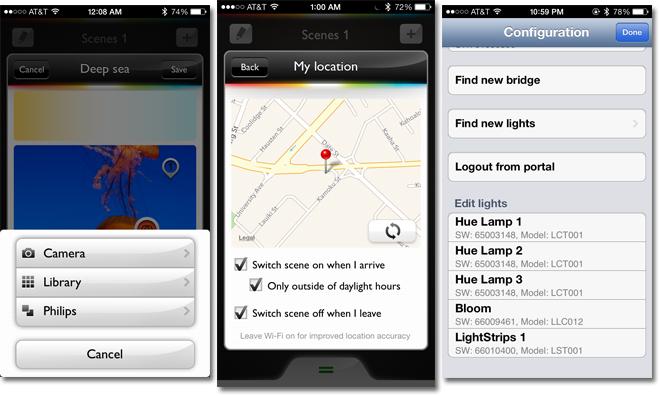
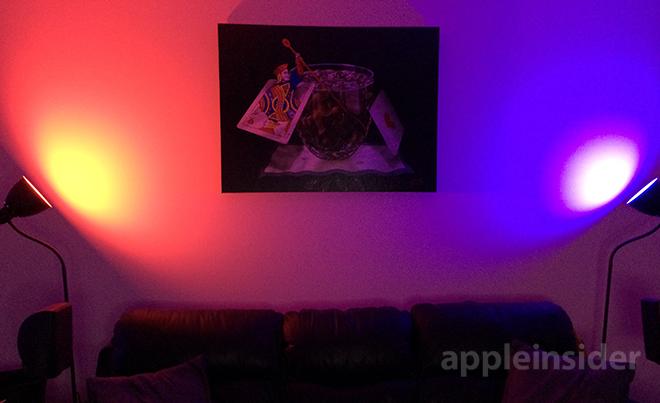
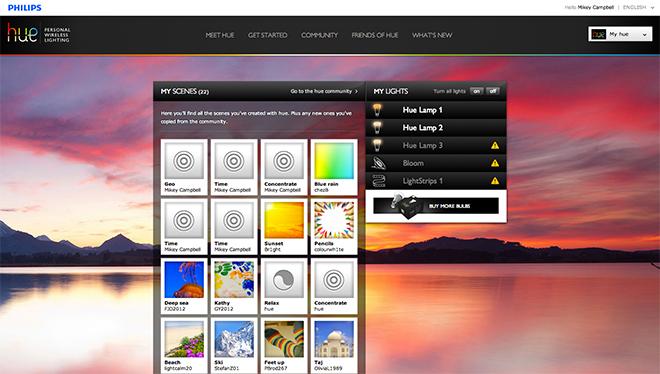
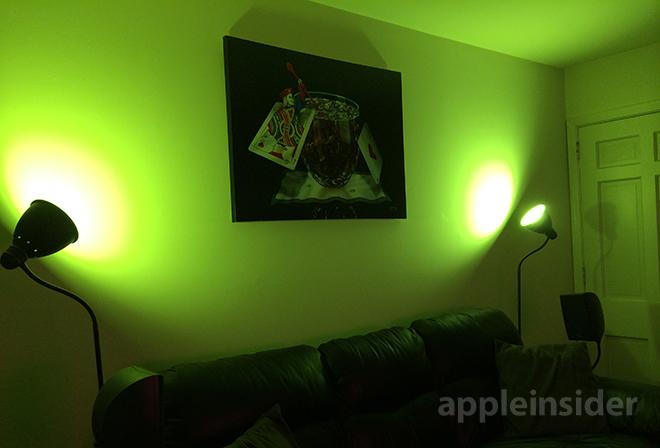
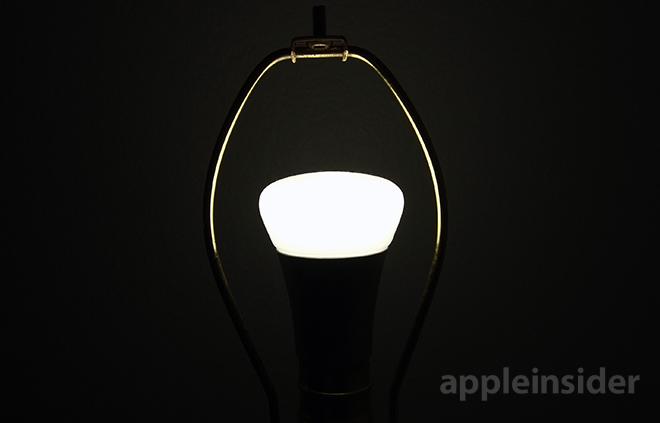








-m.jpg)






 Amber Neely
Amber Neely
 Malcolm Owen
Malcolm Owen


 Christine McKee
Christine McKee


 William Gallagher
William Gallagher


-m.jpg)






27 Comments
Maybe once 3rd-party solutions start rolling in I could see a consumer use for this but as of right now it's just an expensive gadget. I could see it tied to a doorbell and/or phone so the deaf could get lights throughout a home that change colors without a costly and ultimately clunky solution I've seen in the past, but outside of that I find it hard to see real consumer usage that would make this worthwhile.
What do you mean by "bridge compatibility issues". That's kind of vague.
good lord. the lighting in the four colored appleinsider photos is horrible. you're not doing the advertiser any favors by publishing them.
not a fan of hue, i have zero desire to have something plugged into the wall all the time. that is why this company is so appealing, http://lifx.co
a wifi bulb without plugging anything in, a led controllable bulb that is no more hassle than installing a bulb, unlike hue.
While it's nice to not have to use a bridge, these bulbs are also 50% more expensive. The nice thing with the bridge is that it provides one point of access for the smartphone to communicate with to control all the bulbs in your home (Hue supports up to 50 on a bridge). It also lets you control Hue remotely. For instance, I can turn on lights in my house anywhere in the world. The bridge also handles things like schedules. I know all of this because I'm working on an app for Hue and possibly other bulbs in the future.
LIFX is pretty cool looking, it's just much more expensive than the bridge model just to save plugging something in once.